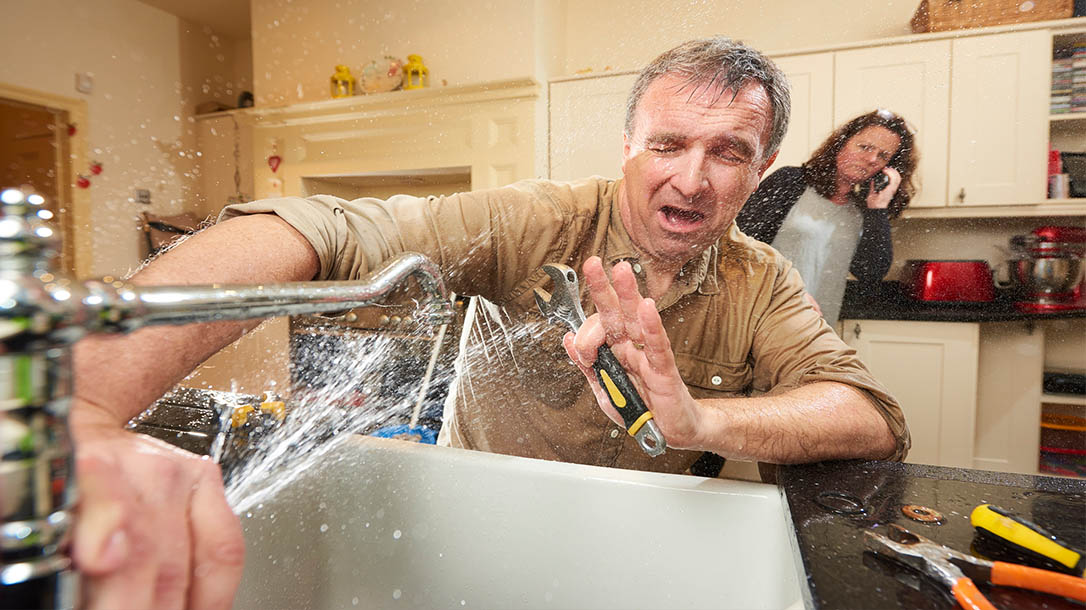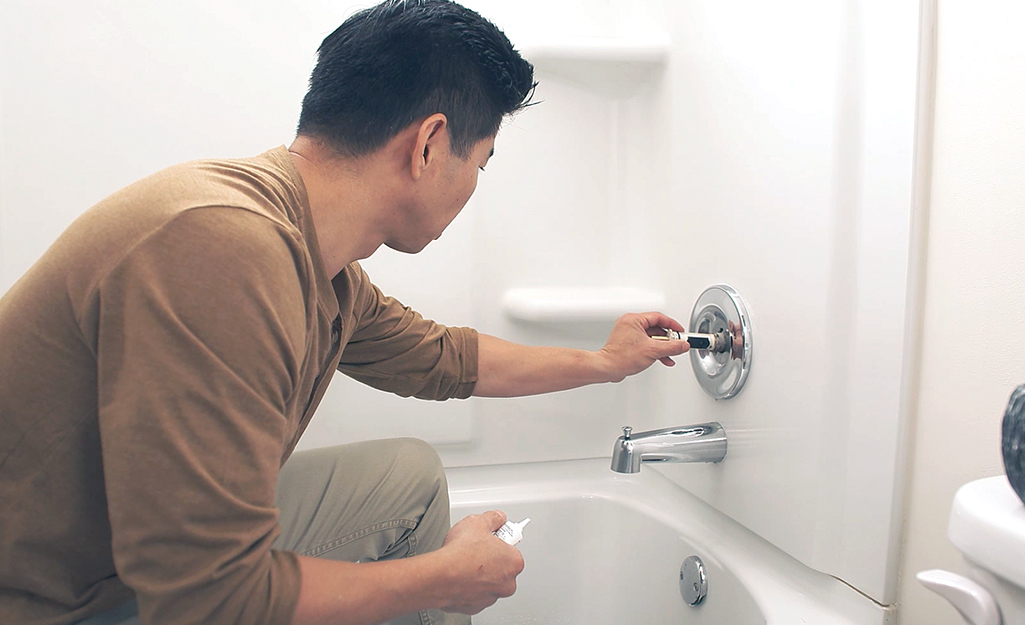My Factors Behind Fixing a Broken Faucet
My Factors Behind Fixing a Broken Faucet
Blog Article
How do you really feel in relation to Why It's Important to Fix Leaky Faucets?

Dripping faucets may feel like a minor trouble, however their influence goes beyond simply the annoyance of the noise. From drainage to incurring unneeded economic costs and health risks, overlooking a leaking tap can result in different consequences. In this write-up, we'll delve into why it's critical to resolve this usual family issue without delay and properly.
Wastefulness of Water
Environmental Influence
Dripping faucets contribute significantly to water wastage. According to the Epa (EPA), a single tap trickling at one drip per second can throw away greater than 3,000 gallons of water per year. This not just pressures water sources yet also affects ecosystems and wildlife depending on them.
Financial Expenses
Boosted Water Costs
Past the environmental influence, dripping taps can pump up water expenses considerably. The accumulated wastage gradually translates into greater energy expenses, which could have been prevented with timely repair services.
Possible Residential Or Commercial Property Damage
In addition, extended trickling can lead to damage to components and surfaces bordering the tap. Water accumulation can cause staining, rust, and also structural issues if left unattended, resulting in extra fixing expenses.
Wellness Issues
Mold and Mold Development
The consistent existence of dampness from a trickling tap creates an excellent atmosphere for mold and mildew and mold growth. These fungi not only endanger indoor air high quality but also pose health and wellness dangers, particularly for individuals with respiratory system problems or allergic reactions.
Waterborne Illness
Stagnant water in trickling taps can end up being a breeding ground for microorganisms and other pathogens, increasing the threat of waterborne illness. Pollutants such as Legionella bacteria flourish in stagnant water, possibly causing significant ailments when consumed or breathed in.
DIY vs. Professional Repair work
Advantages and disadvantages of Do It Yourself Repair
While some might attempt to fix a leaking faucet themselves, do it yourself repair services come with their own collection of challenges. Without correct understanding and devices, DIY efforts can aggravate the issue or cause insufficient repair services, prolonging the trouble.
Benefits of Hiring a Professional Plumber
Hiring an expert plumber makes certain that the underlying source of the trickling faucet is resolved effectively. Plumbing technicians have the knowledge and tools to identify and repair tap concerns effectively, conserving time and lessening the danger of more damages.
Step-by-Step Overview to Repairing a Dripping Faucet
Devices Needed
Prior to attempting to deal with a leaking faucet, gather the required devices, including an adjustable wrench, screwdrivers, substitute components (such as washers or cartridges), and plumber's tape.
Common Faucet Issues and Their Solutions
Recognize the sort of faucet and the certain concern causing the drip. Usual issues include worn-out washing machines, corroded valve seats, or malfunctioning O-rings. Refer to manufacturer instructions or on-line tutorials for detailed advice on repairs.
Safety nets
Regular Maintenance Tips
To prevent dripping faucets, carry out regular maintenance such as cleaning up aerators, inspecting for leaks, and changing worn-out parts quickly. In addition, take into consideration mounting water-saving tools or upgrading to more efficient fixtures.
Value of Prompt Fixes
Attending to leaking taps as quickly as they're noticed prevents additional water wastefulness and potential damage, inevitably saving both water and money in the future.
Impact on Building Value
Understanding of Well-Maintained Residential Or Commercial Property
Keeping a home in good condition, consisting of attending to upkeep issues like trickling taps, improves its regarded worth and value amongst potential purchasers or renters.
Impact on Resale Worth
Characteristics with well-kept plumbing fixtures, consisting of faucets, command greater resale values in the real estate market. Attending to leaking faucets can contribute to a positive impact throughout home examinations and arrangements.
Ecological Obligation
Individual Payment to Conservation
Taking duty for repairing dripping faucets lines up with broader efforts towards water preservation and environmental sustainability. Every person's activities jointly make a significant influence on preserving precious sources.
Sustainable Living Practices
By focusing on timely repair services and adopting water-saving habits, people add to sustainable living techniques that benefit both existing and future generations.
Final thought
Attending to a dripping tap exceeds mere comfort; it's a vital action towards conserving water, minimizing monetary prices, and protecting wellness and home. Whether via do it yourself repair services or specialist aid, taking action to fix leaking faucets is a small yet impactful way to promote responsible stewardship of resources and contribute to a healthier, much more sustainable future.
How to Fix a Leaky Faucet: Step-by-Step Repair Guide
A leaky faucet may seem like a simple annoyance, but if it's not fixed promptly, that leak could cost hundreds to potentially thousands. From water damage to mold, mildew, and high water bills, even a tiny leak can be catastrophic if left unattended. Damage like this can even affect the overall value of your home, so it's important to take the right approach for leaky faucet repair. You may need the help of a plumber in some cases, but we've got a few tips you can try on how to fix a leaky faucet before calling the pros.
Four Faucet Types
When you're learning how to fix a leaky faucet, the first step is knowing what kind of faucet you're working with! There are four common types.
Cartridge Faucets
Cartridge faucets come in one- or two-handled varieties. In one-handled cartridge faucets, hot and cold water combines in a single cartridge. In the two-handled versions, hot and cold water are controlled separately and mixed in the faucet.
Ball Faucets
Ball faucets have a single lever you push up and down to adjust the pressure and rotate to change the temperature. A slotted metal ball controls the amount of water allowed into the spout.
Compression Washer Faucets
They're the oldest type of faucet, but they're still used in many homes — especially older ones. Compression faucets have two separate handles that, when turned, raise or lower the washer that seals a water valve. This valve stops water from flowing through the faucet when it is turned off.
Disc Faucets
Disc faucets rarely need to be repaired due to their maintenance-free design. The water flow is controlled by two discs — the upper one raises and lowers against a fixed lower disc, creating a watertight seal. If your disc faucet starts leaking, you may need to replace the seals or clean residue buildup from the inlets.
Fixing a Leaky Faucet
Step 1: Turn Off the Water
Whether you're learning how to fix a leaky bathtub faucet or how to fix a leaky kitchen faucet, always turn off the water supply to your working area when you're fixing a leak. The last thing you want is a flood added to your list of things to fix.
Look for the shutoff valves below your sink or around the tub and turn them clockwise to stop the water flow. If your faucet doesn't have shutoff valves, you may need to turn off the water for the whole house. Check to make sure it's off by turning the faucet on. If nothing comes out, you're ready to start the repair.
Step 2: Take Apart the Faucet
How you disassemble your faucet depends on the type of fixture you have. You can use a flathead screwdriver to remove the caps on top of the handle or handles for cartridge and compression faucets. Inside, you should see handle screws. Unscrew these with a screwdriver to remove the handle.
Disc- and ball-style faucets will typically have an inlet screw near the handle, and removing that will reveal the interior of the faucet.
Detach the Valve Stem
For cartridge- and compression-style faucets, you'll see the inner valve stem or cartridge once you remove the faucet handles. If you have a compression faucet, unscrew the brass valve stem. If you have a cartridge faucet, pull out the cartridge. If your cartridge has been in place for a while, it may require some tools or extra force to remove it due to mineral deposits.
Examine and Replace Parts
Once you've removed the parts, check them out to confirm what needs to be replaced. You may see corroded rubber washers, O-rings, stems, or cartridges. On a ball-style faucet, check the seats and springs for damage.
If you need to repair a leaky disc faucet, check the inlet and seals on the lower disc.
Once you determine what parts must be replaced, visit your local hardware store. Bring the damaged parts with you to ensure you can purchase the correct components to replace them.
Clean Valves and Faucet Cavity
If you've removed a stem or cartridge, you may notice mineral buildup in the faucet's threads. Use white vinegar to clean the valve seat by soaking it for a few minutes, then scrub it away with a soft toothbrush and rinse with warm water. You can also clean the interior of the faucet in the same way.
Reassemble the Faucet
Once your faucet is cleaned and the required parts have been replaced, it's time to reassemble it. Put the pieces back together and slowly turn the water supply back on. Doing this slowly is crucial because too much initial water pressure can damage the new hardware you've just installed.
https://homewarranty.firstam.com/blog/how-to-fix-leaky-faucet

We were shown that write-up about Leaky Faucets: Why They Happen & What to Do About Them from a friend on a different web page. You should pause to share this post if you enjoyed it. Thanks so much for going through it.
Report this page